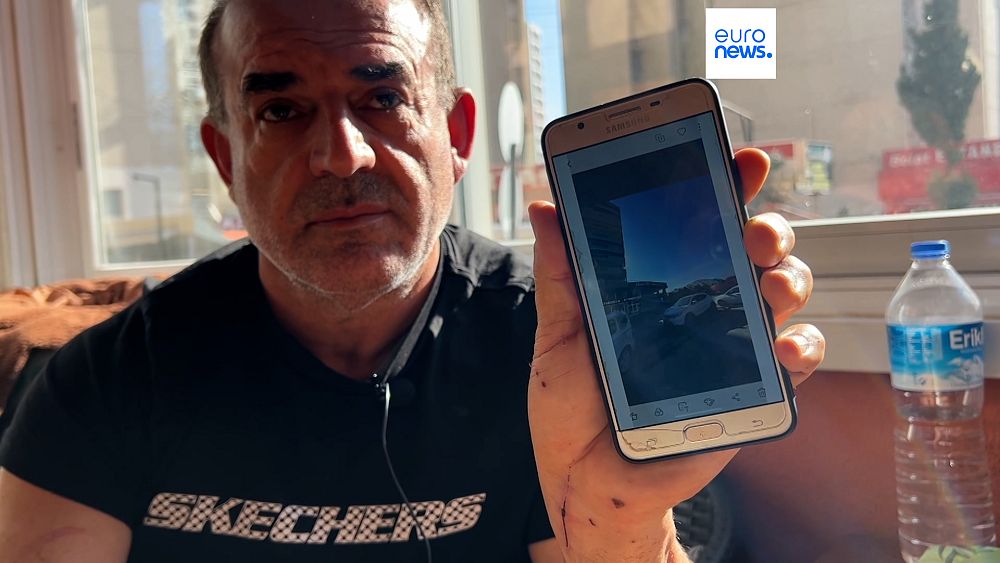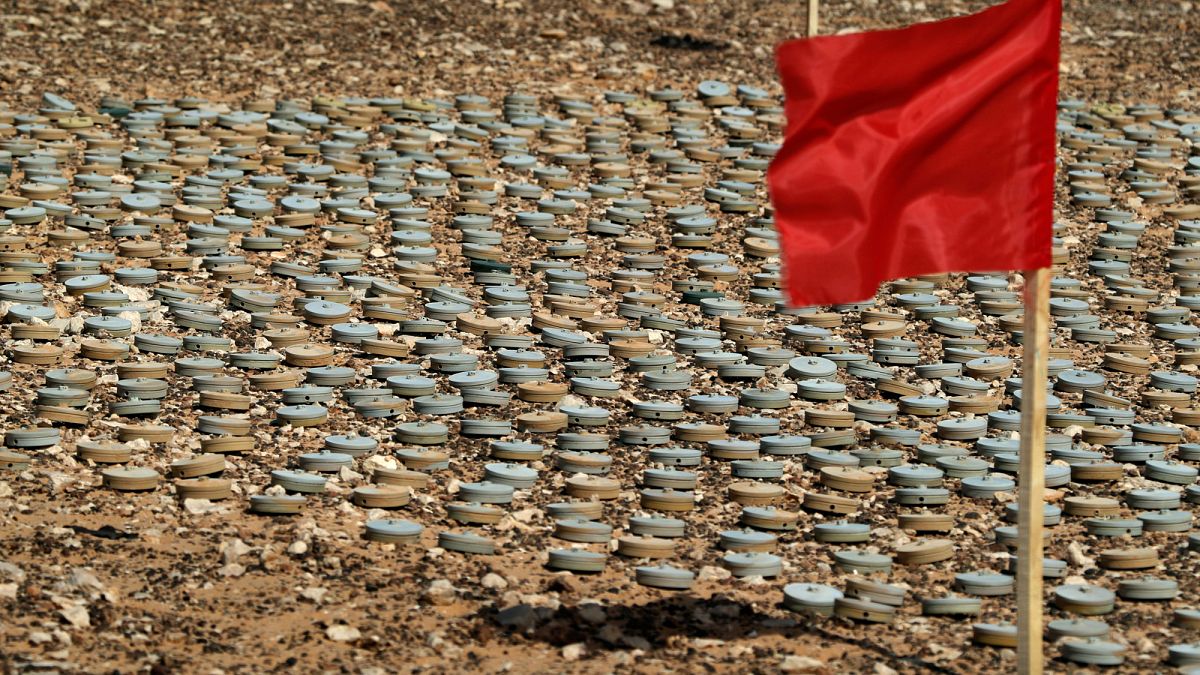It took Halil Ibrahim Gokpinar 20 minutes to get out from under the rubble of his collapsed building in Kahramanmaras, Turkey after the earthquake struck on 6 February.
“It was night, but I saw some kind of light and a space, I tried to open the hole and got out,” he told Euronews correspondent Anelise Borges.
But once he was free, the clock started ticking to rescue his wife Cigdem, and child who were still under the rubble of what was once their home. He had to use his bare hands to dig through the wreckage.
“Her lips were purple. It was clear she was out of oxygen and blood. She was not responding to my voice,” he remembered with tears in his eyes.
“Then we took her to the other city hospital and when we got there, it is not possible to describe it as horror.
“We took my wife inside. Forget about beds, chairs, and stretchers. There was no space to put her because of the dead bodies and patients. I had to push people aside and put her on the ground. “
Halil’s wife went through surgery on Tuesday and is still in the ICU.
But many in the city are not as lucky.
Ten days after the earthquake in Syria and Turkey, the figures are staggering: more than 40,000 dead and the Turkish government estimates that 50,000 homes have been destroyed or severely damaged.
In Adana, most hospitals are operating at capacity and some family members are literally camping on-site, waiting for their loved ones to recover.
Hundreds of thousands of people don’t have roofs over their heads.
Rescuing anyone today seems almost a miracle, yet a 74-year-old was rescued after 227 hours under the rubble in Kahramanmaras on Wednesday.
The Turkish government has dismissed allegations that there were problems coordinating rescue operations – or that they have even stopped efforts – insisting there are over 76 countries with teams on the ground still.
Watch Euronews’ report in the video player above to learn more.




















Discussion about this post